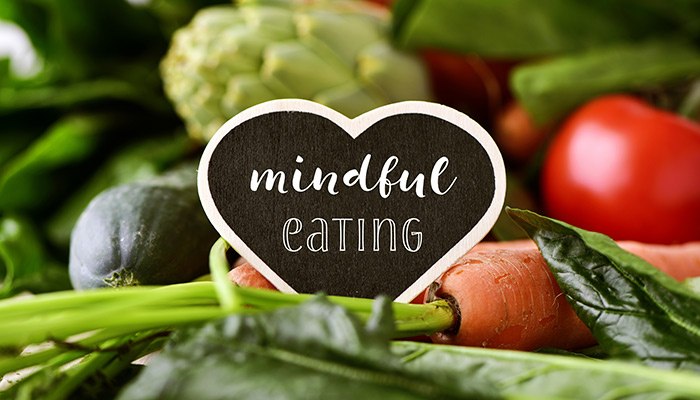Eating is an art, a practice, and should be a pleasure in all cases.
The mindfulness movement is a big one and I wanted to dedicate this article to all the teachers who have been trying to teach mindful eating. Because of them, I woke up this morning with a great memory.
My Daddy, rest his soul, was a tolerant man. In a house where no one questioned much, as was traditional, I dared to ask a question about what I thought was being religious. I asked why we pray before we eat. Daddy looked at me with a little shrug and simply said, “Makes it taste better.”
He probably said that to hush me, and it worked. What he may not have known was that he was absolutely correct.
Pausing before one eats, whether there is spoken word or not, allows the body to get ready to experience food and the nutrients therein.
The body’s parasympathetic nervous system is activated by breathing, anticipation and bringing our full attention to what is in front of us. Our “rest and digest” systems do not kick in if our mind is thinking about 5 different subjects, especially those that have nothing to do with the present moment.
Here are a few tips that bring Mind to Food, and aid in digestion:
- “Never eat on your feet.” A brilliant suggestion by a mindfulness teacher I heard talk last month. This is a huge battle for me personally. I grew up in a big family and we never ate standing up. I grew up and decided it was more efficient to do so, and worst of all, I have not had a place to sit and eat for the last 10 years. I would cook (nibble as I cooked) and serve and stand to eat in the same place. It was not a pleasure to eat. I ate to get it over with. Now, I have a family table, plenty of kids old enough to help me so that we can all get to the table and eat….and yet, I find myself eating upright sometimes. Just a terrible habit. The trick is to recognize it, recover from it, and sit down to eat.
- Before you start to eat, pause. Taking 5 mindful breaths gives one time to contemplate, give thanks, and appreciate where the food came from. Whether done in complete silence, or in the form of a traditional Southern Baptist prayer (no offense Mama. You know I love you more ‘n my luggage.), this type of breathing lowers blood pressure, heart rate and puts the body in a restful state, calling the blood to the internal organs and allowing digestion to be efficient and effective for nutrient absorption.
- Activate your sense perceptions. Look at your food, smell it. When food is colorful, the eyes will activate the digestive glands as well as the nose will. The odor of food influences the tongue’s taste buds. The more we experience our food, the more satisfying it will be, and consequently, the less we will eat. I should say, we will be satiated sooner. This feeling often has no bearing on the amount we end up eating….especially if there is an abundance of something we love. It takes a lot of mindfulness to realize when we are satisfied, but not stuffed.
- Chew food until it is watery, then swallow. This mindful action not only allows for proper digestion by activating the salivary glands and those in the stomach getting ready to receive the food and break them down, but also enhances the food experience by allowing the food to touch all of the taste buds in the mouth, which in turn tells the stomach what kinds of enzymes it will take to process the food and how much of those it needs to make. I believe fast eating and improper chewing is the main reason people end up with reflux disease.
I know when I am conscious of these things, I have a really different food experience, my body reacts to that by feeling more energized when I need it to be, and that I sleep better because my body isn’t as stressed as it is when I wolf my food down.
Life is all about pleasure, and nourishing our bodies has a true purpose.
Let your purpose be a pleasure.
Sit down, slow down and enjoy all that is there for you.
Annie Morris, LMT
